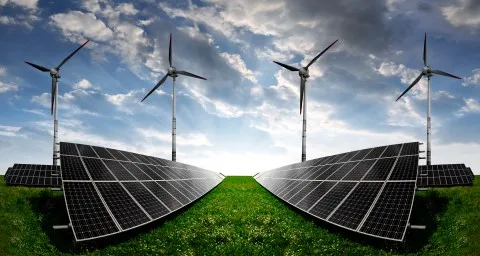
Why Japanese investors are shifting focus into wind projects
No thanks to negative domestic interest rates.
Japanese investors, noteably, are moving beyond solar and into wind, prompted broadly by negative domestic interest rates, according to the Insitute of Energy Economics and Financial Analysis (IEEFA). Japan’s banks especially have been attracted to renewable energy infrastructure investments abroad by their strong annuity yields backed by long-term PPAs from mostly highly rated utilities.
According to Bloomberg New Energy Finance, Mitsubishi UFJ Financial Group (MUFJ) and Sumitomo Mitsui Financial Group were the two largest lead arrangers globally for clean energy asset financing in the first 10 months of 2016. These two banks in particular have moved into offshore wind in Europe.
This experience places these banks in a strong position to support the growing Japanese offshore wind industry. (MUFJ has also invested in onshore wind, including by way of a co-investment with German insurer Allianz in the 225MW Great Western wind project in Oklahoma).
Here's more from IEEFA:
Elsewhere, Mitsubishi Heavy Industries (MHI) is building capacity in offshore wind turbines worldwide via a joint venture with Danish wind turbine manufacturer Vestas—MHI Vestas Offshore Wind took its largest-ever order, for 450MW of capacity in January. The order, from Denmark’s DONG Energy, will use MHI Vestas Offshore Wind’s 8MW turbines for the German Borkum Riffgrund 2 project.
In February, Kyushu Electric’s renewable development arm, Kyuden Mirai Energy, won the right to develop a US$1.55 billion 229MW offshore wind project off the port of Hibikinada in Fukuoka prefecture. Kyuden Mirai joins a consortium of Kyudenko Corp, Hokutaku Renewable Energy Service, J-Power and Saibu Gas for construction of the plant, the first scheme to take advantage of a legal modification to the country’s Port and Harbour Law to allow for up to a 200-year use of designated water zones in port-designated areas to leverage existing port infrastructure for offshore wind project.
Battery storage is also developing fast with Panasonic, a major global player in electric vehicle batteries via its partnership with Tesla, especially in the fast-expanding home battery storage market. Panasonic held a 74 percent market share of the U.S. electric vehicle battery market in 2016.
On the geothermal front, Inpex Corp acquired an effective 18 percent stake in the 330MW Sarulla geothermal power project in Sumatra, Indonesia, in June 2015. Once commissioned, by 2018, this will be the world’s largest geothermal power project. Itochu Corp and Kyushu Electric are co-equity investors alongside Ormat Technologies and PT Medco Power Indonesia. This past January, JICA’s LEAP fund provided a US$109 million loan to the 80MW Muara Laboh geothermal project in West Sumatra, a project being developed by Sumitomo, Engie and Supreme Energy assisted by credit guarantees from Nippon Export and Investment Insurance (NEXI).
In the global energy transition, Japan is developing an edge as its corporations grow increasingly experienced with investing and constructing renewable energy projects overseas across a range of technologies. These technologies will play a major role in Japan itself and will allow the nation to increase its energy security and help achieve its Paris COP21 commitments.
As IEEFA sees it, momentum is clearly shifting from Japan’s current overreliance on imported thermal power, a trend evinced most recently by Kansai Electric and TonenGeneral announcing just this month the scrapping of a plan to build a 1GW coal power plant in Chiba after a similar decision in February by Kansai Electric to scrap the Ako 1.2GW coal-fired power station proposal.
While Japanese industry waits for clarification of a longer-term government policy for a more sustainable domestic renewable energy investment program, IEEFA expects Japanese companies to look with vigor toward overseas opportunities.
In the meantime, more supportive policies that including legal and economic separation of the national grid for use by all generators equally will encourage Japanese firms to apply their international experience to the domestic market.



















 Advertise
Advertise







